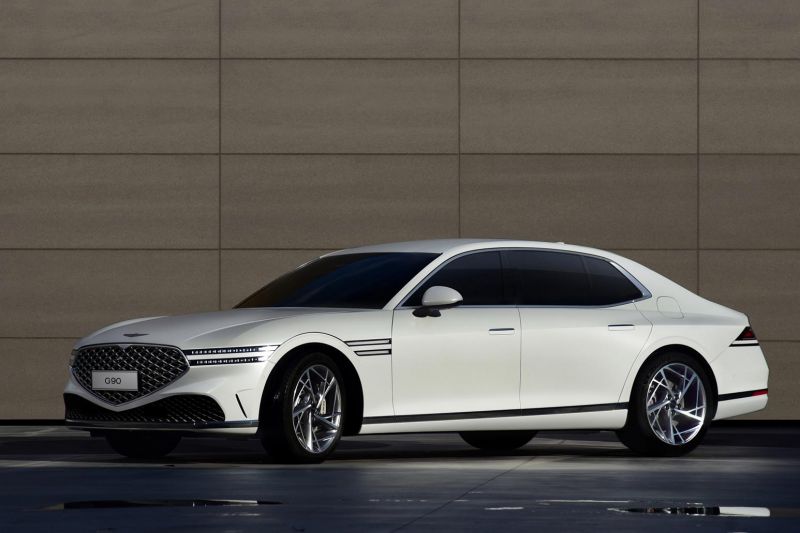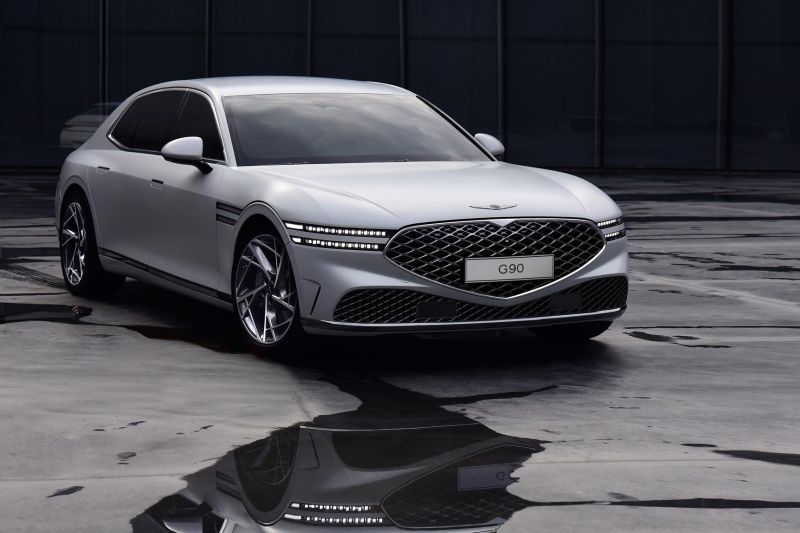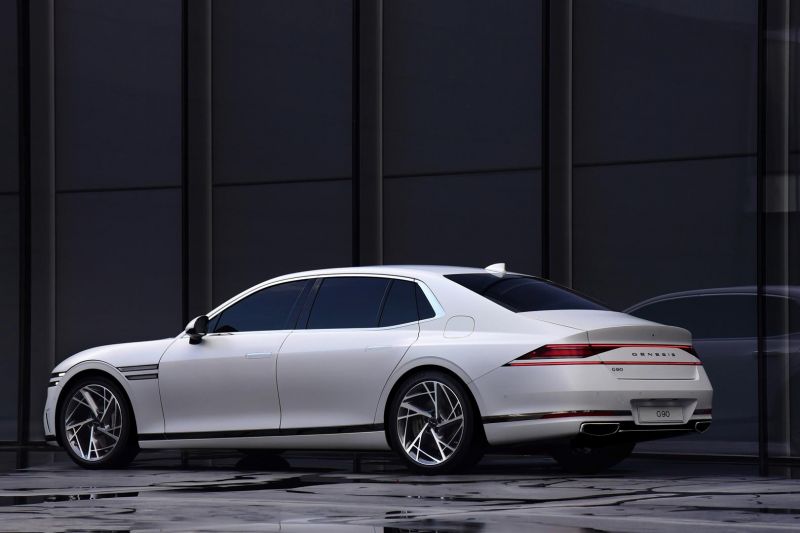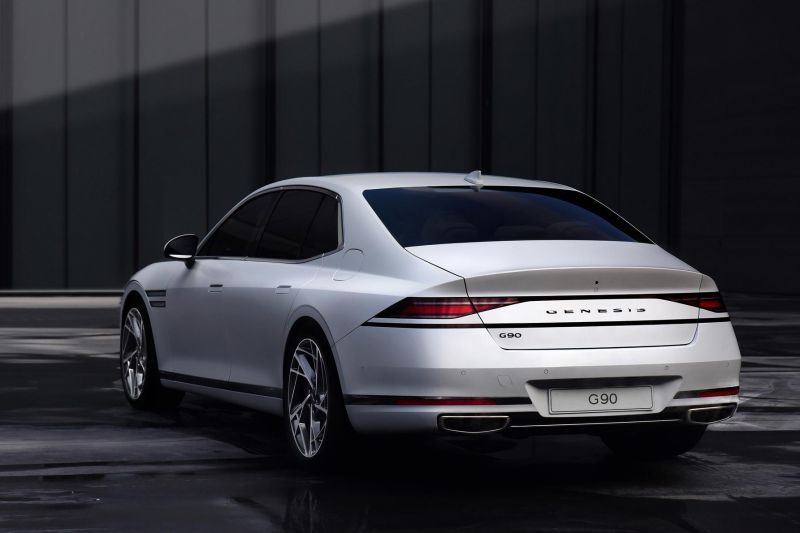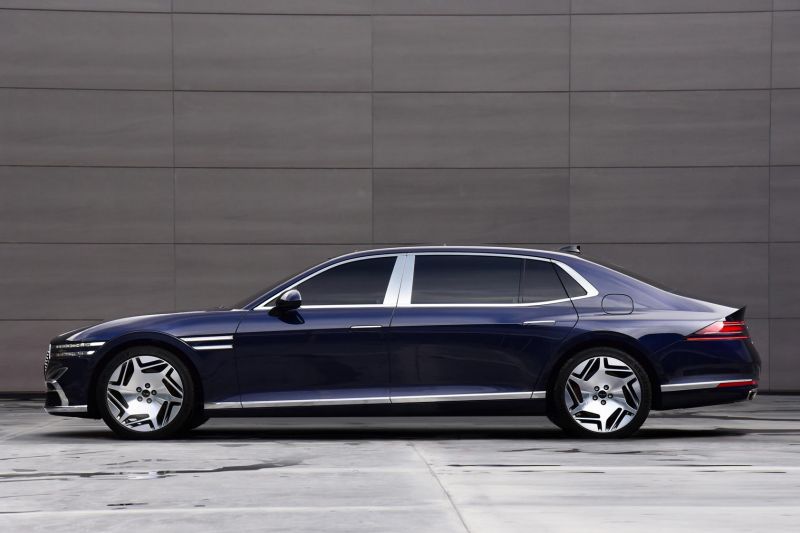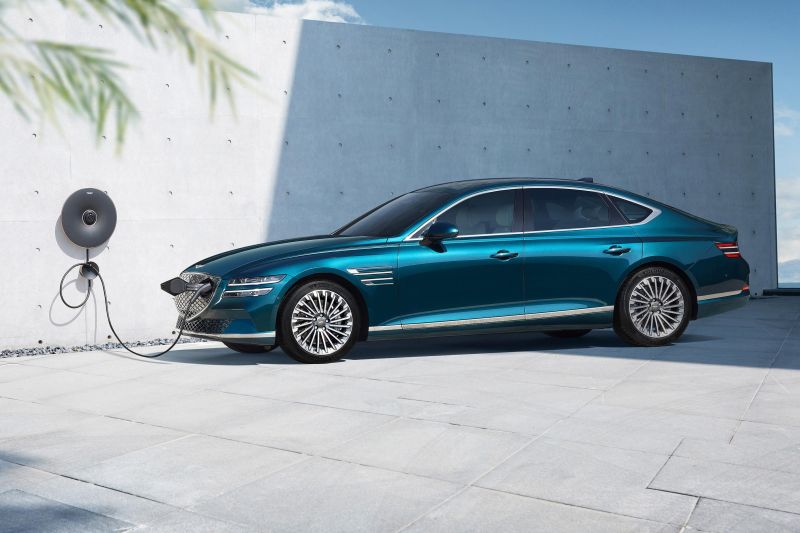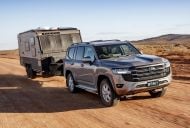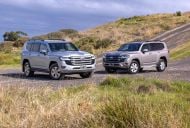Genesis is putting the fight to the Mercedes-Benz S-Class with a redesigned G90 flagship.
The Korean luxury brand has revealed the exterior of the G90, though we’ve yet to see inside the cabin or under the bonnet.
Unfortunately, the flagship sedan won’t be coming here, though it will be exported to global markets such as the US.
“We have no current plans to bring the new G90 sedan to Australia, our focus will remain on our current model range which consists of two sedans (G70 & G80) and two SUVs (GV70 & GV80),” said a spokesperson for Genesis Australia.
“However next year this focus will shift to our new portfolio of EVs, we plan to launch three all-electric cars locally in 2022 (GV60, Electrified GV70 and Electrified G80), with more to come.
“Alternative propulsion is at the core of Genesis’ product development strategy, our goal is to offer alternative propulsion in all segments of our product portfolio. Genesis plans to establish an 8 model EV line-up by 2030, powered by either fuel cell or batteries.”
The redesigned G90 wears slinkier styling than the current model, which is a heavy facelift of the first-generation G90 introduced in 2016. It rivals the likes of the S-Class, BMW 7 Series and Lexus LS.
While the G90 doesn’t bear a close resemblance to the smaller G80, there are Genesis design cues like a crest-shaped grille and split-level lighting elements.
The crest grille takes Genesis’ signature “G-Matrix” pattern and adds another layer with the same pattern, creating a three-dimensional effect, while the front lights are Genesis’ slimmest yet.
Genesis says it’s achieved this slimness by intercrossing the lens of the daytime running lights with low-beam lights powered by Micro Lens Array (MLA) technology.
The G90 uses a clamshell front bonnet to eliminate panel gaps and give the car a sleeker look, and it’s capped with an emblem that Genesis says is nearly 80 per cent thinner than previous emblems.
The roofline appears more upright than that of a G80, likely to give rear seat occupants even more generous headroom, but Genesis designers have used feature lines to draw the eye down and to the rear.
The result is a more svelte look than the outgoing G90 and more conservative rivals like the Audi A8.
Down back, the split-level tail lights stretch across the rear fascia but the G90 differs from other Genesis models in having thicker ends for the top level, thus giving the G90’s rear an arguably more conventional look.
Genesis’ winged logo doesn’t feature at the rear, with the brand name instead spelled out across the boot lid.
As before, there’s an extended-length version. This rides a 190mm longer wheelbase than the standard-length version and features a daylight opening and B-pillar finished in chrome.
Additional chrome trim can be found on the front and rear bumpers, while there’s an exclusive 20-inch wheel design.
The G90 is the latest Genesis to offer intricate wheel designs, with the standard-length G90 previewed wearing similar wheels to those of the GV60 electric SUV.
Technical information on the G90 will be released at the model’s official debut.
Depending on the market, the current model is offered with a choice of a naturally-aspirated 3.8-litre V6, a twin-turbocharged 3.3-litre V6 and a naturally-aspirated 5.0-litre V8.
The G90 is expected to drop the V8 and atmo V6 options as the G80 did with its redesign, while the range will likely be bolstered by an all-electric variant.
The G80 will continue to be the brand’s flagship sedan in Australia, and in 2022 its model range will grow.
While the turbo-diesel 2.2D was axed after only a few months on sale, the range will expand with both an all-electric model called the Electrified G80 and a sportier-looking model called, appropriately, the G80 Sport.





